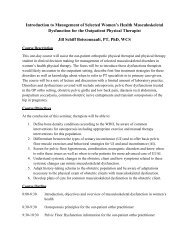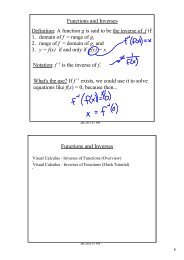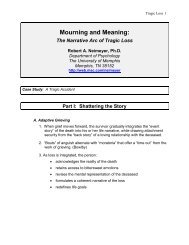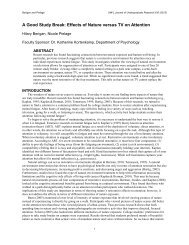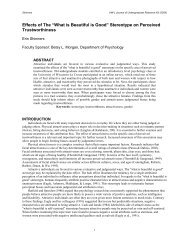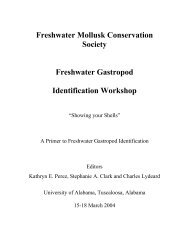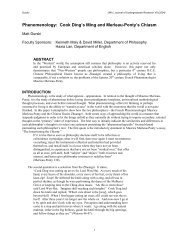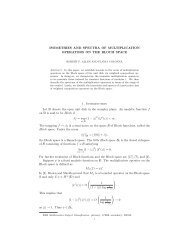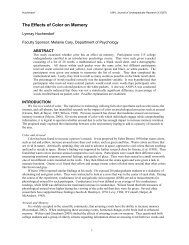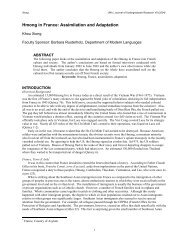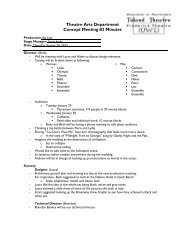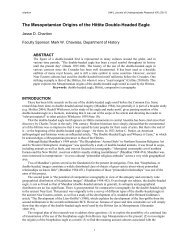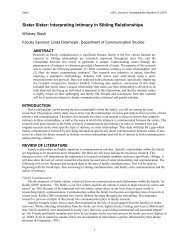A Guide for Terrestrial Gastropod Identification - University of ...
A Guide for Terrestrial Gastropod Identification - University of ...
A Guide for Terrestrial Gastropod Identification - University of ...
Create successful ePaper yourself
Turn your PDF publications into a flip-book with our unique Google optimized e-Paper software.
species has even been observed <strong>for</strong>aging underwater <strong>for</strong> aquatic snail in Hawaii (Kinzie, 1992).<br />
This species has been observed in a variety <strong>of</strong> habitats, in woods dominated by salt cedar (Davis,<br />
Perez & Bennett, 2004), roadsides, edges <strong>of</strong> marsh, and disturbed urban areas (Hubricht, 1985).<br />
Euglandina singleyana (placed in the genus Glandina by Schileyko) is a large snail (up to<br />
51 mm length) distributed across Central Texas ranging from Galveston County to Val Verde<br />
County with a few specimens collected in Mexico near the Texas border (Perez & Strenth,<br />
2003). In the eastern part <strong>of</strong> its range this snail is found under rocks and logs in wooded stream<br />
valleys, in the western part <strong>of</strong> the range it is found under fallen Yucca and under rocks in desert<br />
shrub habitat dominated by Lechugilla (Fullington & Pratt, 1974). These snails are active on<br />
humid days, early morning, or after rain. They can be observed following the trails <strong>of</strong> prey snails<br />
and <strong>of</strong>ten leave small piles <strong>of</strong> empty shells <strong>of</strong> their favorite prey near rocky hiding places (KEP<br />
pers obs., Humboldtiana spp.). E. texasiana is a calciphile, found in much wetter places where it<br />
stays damp. This species can also be found crawling on buildings in urban areas. The range <strong>of</strong><br />
this species is the Rio Grande Valley <strong>of</strong> Texas south throughTamaulipas and San Luis Potosi. E.<br />
texasiana is smaller than the other two U.S. Euglandina species reaching maximum <strong>of</strong> ~34 mm<br />
length (Pilsbry, 1946).<br />
Pseudosubulina cheatumi is the northernmost respresentative <strong>of</strong> a largely tropical group.<br />
This species is restricted to leaf litter and stabilized talus in bottoms <strong>of</strong> canyons as well as in the<br />
Evergreen Zone in the Chisos Mountains, Big Bend National Park, Texas (Fullington & Pratt,<br />
1974).<br />
TAXON AUTHOR<br />
G-<br />
RANK DISTRIBUTION<br />
Euglandina rosea (Ferussac, 1818) G5 AL, CA, FL, GA, HI, LA, MS, NC, SC, TX<br />
Euglandina singleyana (W.G. Binney, 1892) G3 TX<br />
Euglandina texasiana (Pfeiffer, 1857) G1G2 TX<br />
Pseudosubulina cheatumi Pilsbry, 1950 G1 TX<br />
Strobilopsidae<br />
Jochen Gerber, Field Museum <strong>of</strong> Natural History<br />
These snails are very small with uni<strong>for</strong>mly brownish shells. Shells are usually lowconical<br />
or beehive-shaped with a narrow umbilicus, and usually sculptured with conspicuous<br />
transverse ribs. One North American species (Strobilops hubbardi) is depressed helicoid with a<br />
wide umbilicus; its shell surface has weakly developed, dense riblets. The aperture is dilated in<br />
all species and more or less thickened. As a family characteristic the strobilopsids possess a<br />
number <strong>of</strong> lamellae inside the last whorl. Number, shape and arrangement <strong>of</strong> these lamellae are<br />
54



